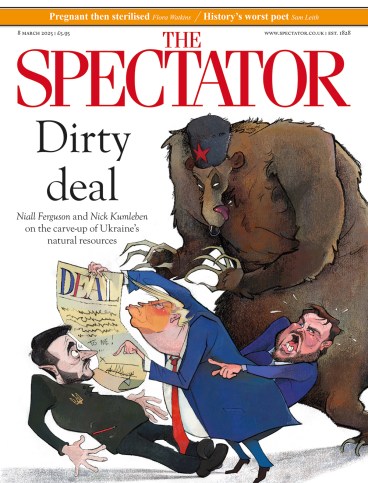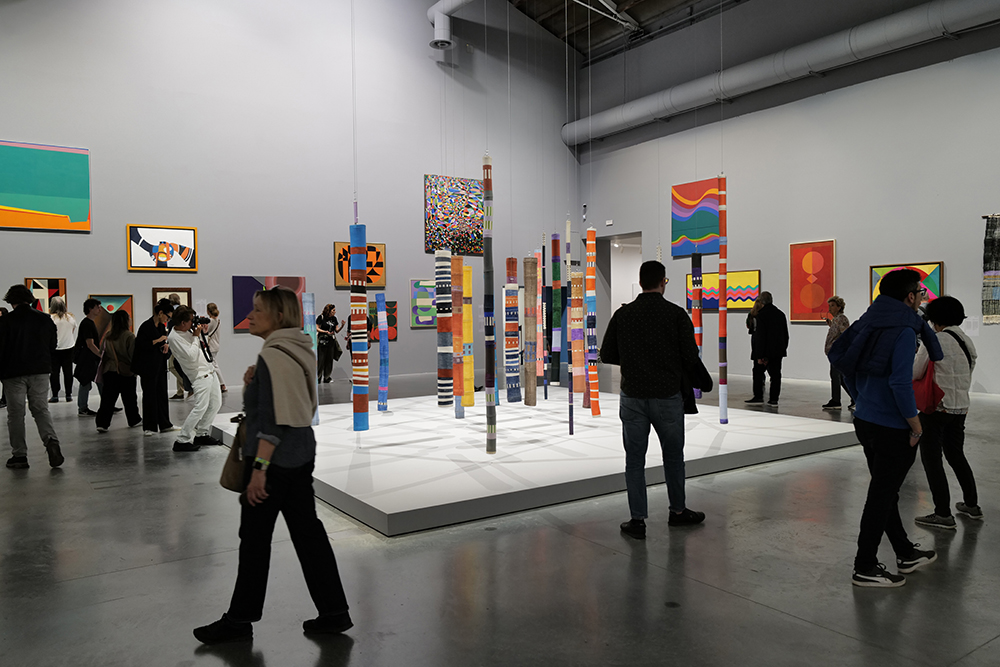
In James Cahill’s first novel, Tiepolo Blue, Don Lamb, a Cambridge art historian, expressed outrage when ‘Sick Bed’, a Tracey Emin-like installation, is erected in the college quad. It is tempting to imagine what Lamb would now make of the many artworks on display in The Violet Hour. Here, Cahill steps away from the rarefied world of academia and public galleries to expose the excesses of the international art market.
At the centre of the book’s many strands is Thomas Haller, whose violet-coloured panels partially inspire the title. He is a world-renowned artist who, in the words of his erstwhile best friend and dealer, Lorna Bedford, has become ‘the moneyed ghost of his former self’. Tutored by his suavely sinister Svengali, Claude Berlins, to ‘forget about images, they’re sentimental’, he betrays his instincts, embracing abstraction at the cost of authenticity.
Unlike Haller, Cahill is no minimalist: he fills his canvas with vividly drawn characters. Foremost among them is the octogenarian Leo Goffman, the owner of ‘probably the best collection of modern art outside a museum’. According to his curator, Fritz Schein, ‘Art is all about fashion now’, and Leo thinks nothing of buying out an entire exhibition, which he describes as mere ‘visual noise’. Meanwhile, he instructs Lorna to acquire Thomas’s latest painting, for which he feels a ‘cupidity’ that ‘could almost be sexual’.
While Thomas, Claude and Leo are all in their varying ways venal, Lorna is the novel’s conscience. Struggling to sustain a relationship with the much younger Justine, she is haunted by the memory of the baby she conceived with Thomas during a one-night stand and gave up for adoption. There are hints that Luca, Claude’s assistant and Thomas’s one-time lover, who suffers a mysterious fall from a south London balcony, may be his son.
But Cahill is less interested in plot twists than in evoking the artistic milieus of New York, London, Montreux and Düsseldorf. This savagely satirical novel culminates at the Venice Biennale, where ‘The art had become a given. What people came to see was the art world.’ For a fleeting moment, Thomas breaks with Claude and pays tribute to Lorna, before retreating into sterile abstraction, which he no longer even paints himself but has ‘outsourced… to a fabricator in Zurich’.
Thomas’s paintings may be monochrome, but Cahill’s novel teems with colour and life, as shockingly compelling as the society it skewers.







Comments